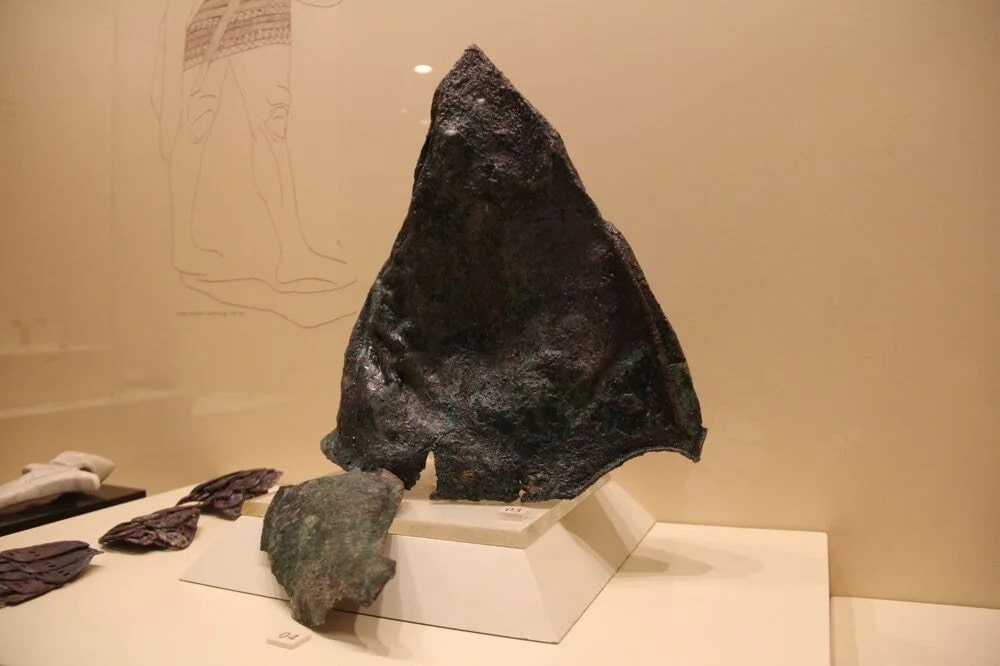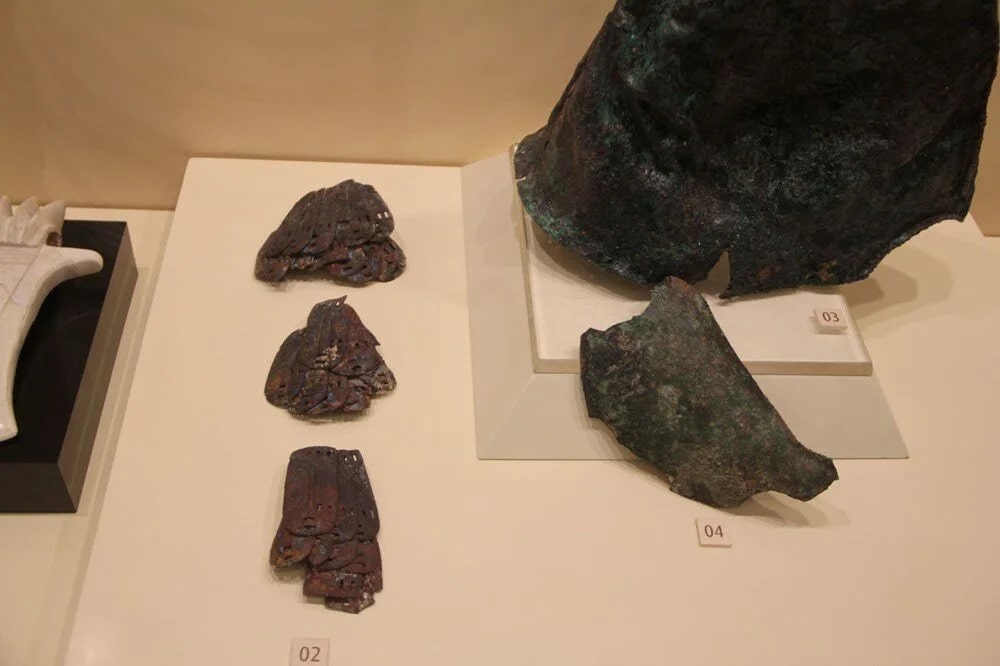
A rare 3,300-year-old bronze helmet from the Hittite Empire is on display at the Çorum Archaeology Museum
The 3,300-year-old bronze helmet unearthed during the excavations carried out in 2002 at the ruins of Şapinuva, one of the important cult centers of the Hittite Empire, is among the rare artifacts that have survived from the Hittite period.
The Hittite bronze helmet discovered during excavations at the ruins of Şapinuva in Ortaköy district of Çorum was published by Dr. Mustafa Süel and introduced to the scientific world.
The helmet, which was given as an offering to the Hittite Storm God, is on display at the Çorum Archeology Museum.
“It was found on an offering bench in building D during the archaeological excavations carried out in 2002 at the Ortaköy Şapinuva archaeological site and published by the late Dr. Mustafa Süel,” said Özge Eren, an archaeologist at the Çorum Museum, adding, “The conical bronze helmet with a pointed crown has rivet holes on the nape and cheek. Apparatus protecting the cheeks and neck are attached to these parts. During the excavations in building D, bronze scales, spearheads, bronze axes belonging to body armor and bronze scales, spearheads and bronze axes belonging to body armor were found collectively in addition to the helmet produced to protect the head and body against cutting weapons in wars.”
📣 Our WhatsApp channel is now LIVE! Stay up-to-date with the latest news and updates, just click here to follow us on WhatsApp and never miss a thing!!

Bronze helmets were among the most important king gifts of the period
Explaining that the bronze helmet was found in a crushed and destroyed condition because it was under the rubble of the religious building called “D” building, which was destroyed by a great fire about 3,300 years ago, Eren said, “Very few of them have survived to the present day due to the fact that bronze war materials are taken as booty in wars and bronze is melted again and again and used in other productions. For this reason, this helmet found in Ortaköy Şapinuva is a rare find that has survived from the Hittite Empire period to the present day, despite its crushed and damaged condition.”

Explaining that the helmet, whose Hurrian name is “gur-sip-pi” and Hittite name is “huprushhi“, was one of the gifts presented to the ‘Storm God’ in a temple dedicated to him, Eren said, “Bronze helmets were among the precious gifts sent to the pharaoh in Ancient Egypt, another superpower at that time.”
“This helmet found in Şapinuva is in perfect harmony with the helmet worn on the head of the god depicted with his war clothes and weapons in the relief on the Boğazköy Hattuşa King’s Gate. This situation shows that the sculptors of the period were able to apply the high relief technique on limestone in a very realistic way and that they were at a level to visually reflect some sections of the Hittite world of 3,300 years ago.”
Cover Photo: IHA
You may also like
- A 1700-year-old statue of Pan unearthed during the excavations at Polyeuktos in İstanbul
- The granary was found in the ancient city of Sebaste, founded by the first Roman emperor Augustus
- Donalar Kale Kapı Rock Tomb or Donalar Rock Tomb
- Theater emerges as works continue in ancient city of Perinthos
- Urartian King Argishti’s bronze shield revealed the name of an unknown country
- The religious center of Lycia, the ancient city of Letoon
- Who were the Luwians?
- A new study brings a fresh perspective on the Anatolian origin of the Indo-European languages
- Perhaps the oldest thermal treatment center in the world, which has been in continuous use for 2000 years -Basilica Therma Roman Bath or King’s Daughter-
- The largest synagogue of the ancient world, located in the ancient city of Sardis, is being restored











Leave a Reply